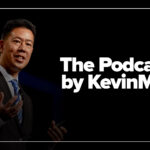Prostate cancer treatment is evolving, and focal therapy is gaining relevance as part of that change.
For decades, patients and their physicians have had limited options: whole-gland treatments like radical prostatectomy or radiation, or active surveillance. But what about the men who fall somewhere in between? What about those who need more than monitoring, yet want to avoid the significant side effects associated with whole-gland therapy?
That is where focal therapy enters the picture. The concept is simple but transformative: treat the cancer for disease control while preserving quality of life by minimizing damage to surrounding tissue.
Why it matters: the impact of side effects
Traditional whole-gland treatments of radical prostatectomy and whole gland radiation are done with intent to cure. While effective, the recurrence rate is still around thirty percent. This does come at a cost. About twenty-five percent of men report urinary leakage after treatment, and a staggering seventy-five percent of men experience erectile dysfunction following the procedure. Radiation carries similar risks and adds concerns around bowel problems while the symptoms generally occur later after treatment.
By contrast, early studies of focal therapy suggest significantly lower rates of these complications. Urinary continence was largely preserved in the PRESERVE study (ninety-seven percent at baseline vs ninety-six percent at 12 months) and eighty-four percent of patients with good sexual function at baseline maintained erections sufficient for penetration at 12 months. For patients, this difference can be life-changing.
The challenge: a field ever evolving
Focal therapy is not a new idea, but its evidence base is still emerging. Large-scale trials and registries are building the foundation. The Focal Therapy Society has been at the forefront in advancing and shaping the field. It has an international membership, has established a Focal Therapy Registry, and has an annual meeting where there is an exciting cross-pollination of ideas and practice.
For an example of trial work, The PART trial, a multicenter feasibility study, randomized eighty-two men with intermediate-risk prostate cancer to either radical prostatectomy or HIFU partial-gland ablation to assess the viability of a larger randomized controlled trial. While not powered for clinical efficacy, results indicated that patients treated with HIFU reported better short- to medium-term quality-of-life outcomes compared to those undergoing surgery, supporting the need for a definitive trial.
Mayo Clinic is conducting a prospective trial evaluating the safety and efficacy of MRI-guided focal laser ablation (FLA) in twenty men aged 45 and older with low- to intermediate-risk prostate cancer. Over three years, the study will measure treatment success, adverse events, and short- to mid-term ablative outcomes.
Francis Medical has a clinical trial, Vapor 2, which has fully enrolled in multiple U.S. sites to determine the efficacy of water vapor as a modality for focal therapy in men with intermediate risk prostate cancer.
While more trials on focal therapy are being conducted, most efforts remain fragmented. There are advancements in multiparametric MRI protocols for diagnosis and treatment guidance. Genomics in prostate cancer are bringing better diagnostic and prognostic indicators. There is also innovation in ablation technology: high-intensity focused ultrasound (HIFU), cryotherapy, irreversible electroporation (IRE). Others explore follow-up and salvage strategies. But few initiatives unite these efforts into a cohesive framework clinicians can confidently adopt.
The opportunity: collaboration over competition
This is where we need a shift in mindset. Focal therapy is not about one method, one device, or one camp winning. It is about an inclusive, evidence-based roadmap that integrates the best tools across disciplines.
Yes, the technologies vary as previously noted, each with its own trade-offs. And yes, clinical adoption hinges on rigorous data, clear patient-selection criteria, and multidisciplinary buy-in. But complexity should push us to collaborate, not fragment further. In addition, the ability to approach the complicated problems with simple integrated solutions will allow overall adoption.
Where do we go from here?
As clinicians and researchers, the path forward is clear: Build inclusive dialogues across urology, oncology, imaging, and industry to harmonize protocols.
We should continue to generate high-quality evidence through registries and randomized trials to strengthen guidelines. The AUA and EAU now acknowledge focal therapy as an option in selected patients, which is a great step forward, but widespread adoption depends on continued data maturation.
We should also educate patients and providers on candidacy and realistic expectations for focal therapy. Early focal therapy studies focused on low-risk prostate cancer, but most clinicians now consider active surveillance the preferred option for these patients. However, recently, focal therapy has been shown to prevent radical whole gland treatment for men on active surveillance thereby avoiding all the toxic side effects. Today, focal therapy is generally recommended for men with intermediate-risk disease who have a single MRI-visible tumor and no confirmed cancer elsewhere in the prostate, verified through negative biopsies.
This is not about replacing existing standards of care. It is about expanding the toolkit and offering men choices that reflect modern medicine’s precision and compassion. Focal therapy has the potential to change the patient experience in profound ways. But to get there, we need collaboration, curiosity, and a commitment to data-driven decisions. Let us build this future together.
Louis S. Liou is a urologist.




















![Understanding the hidden weight bias that harms patient care [PODCAST]](https://kevinmd.com/wp-content/uploads/Design-4-190x100.jpg)
![Rebuilding the backbone of health care [PODCAST]](https://kevinmd.com/wp-content/uploads/Design-3-190x100.jpg)
![Why bad math (not ideology) is killing DPC clinics [PODCAST]](https://kevinmd.com/wp-content/uploads/The-Podcast-by-KevinMD-WideScreen-3000-px-4-190x100.jpg)
